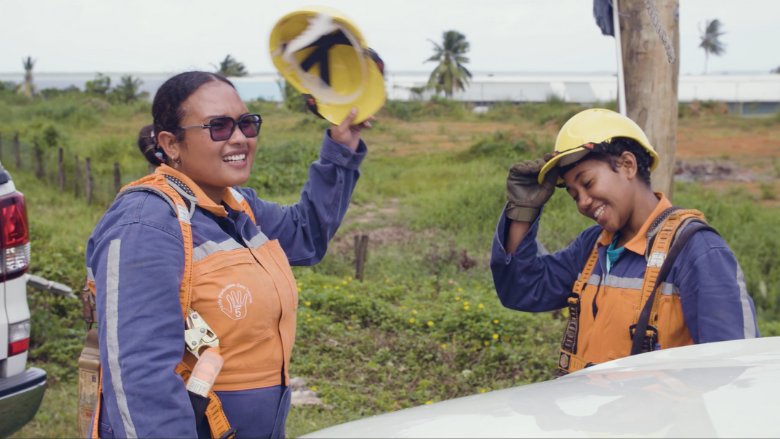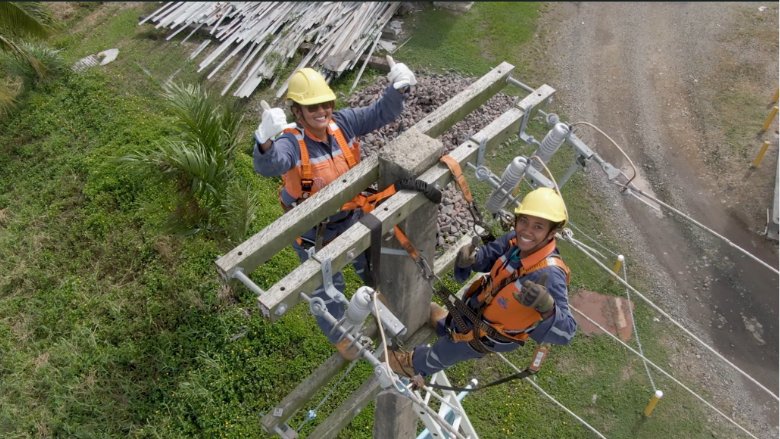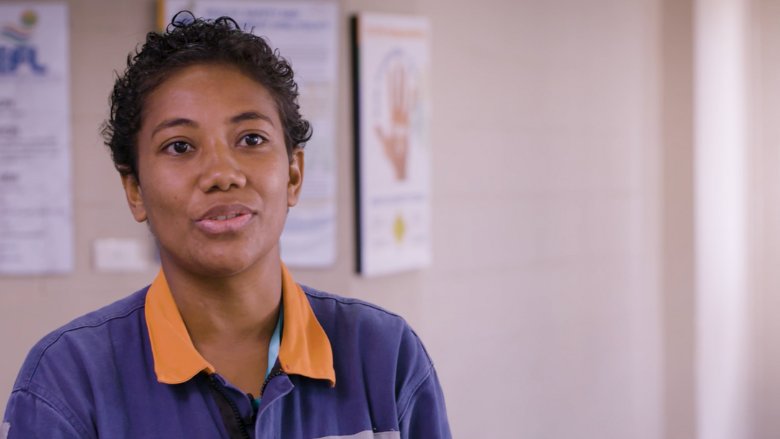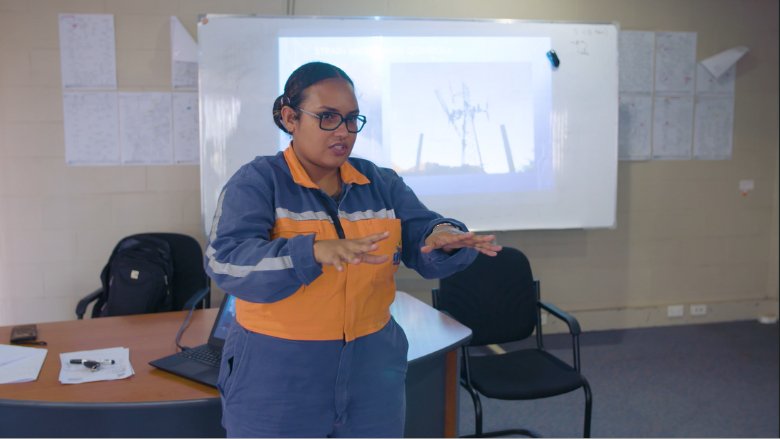In the Pacific, an area highly vulnerable to climate change, a significant transformation is underway in the energy sector. This change encompasses advancing towards a climate-aware energy industry and challenging and reshaping existing gender norms in the energy workforce.
The Pacific Women in Power (PWIP) Program
This transformation is supported by the World Bank through the Pacific Women in Power Program (PWIP), which is being implemented in collaboration with the Pacific Power Association and the Pacific Community. Officially launched in May 2023 at the 5th Pacific Regional Energy and Transport Ministers’ Meeting in Vanuatu, PWIP is an extensive innovative initiative dedicated to enhancing women's roles in engineering, science, and leadership within the energy sector that has received groundbreaking endorsement from energy ministers and energy utility leaders from across countries in the Pacific.
PWIP's comprehensive goals include building evidence and data-driven business cases and targets, engaging champions for advocacy, developing multi-year skill and employment programs, and enhancing capacity building and knowledge management across different groups in the sector. These efforts aim to bolster women’s employment and economic empowerment in the energy sector.
Economic Impact of Gender Equality
Female labor force participation across most of the Pacific countries is low. The World Bank highlights the broader economic benefits of gender equality, estimating that long-term economic growth per person could on average be 22 percent higher, for the Pacific region, if women’s employment rates matched men’s.
There is also a strong business case for gender diversity at work, with research showing better financial performance, greater innovation, safer operating environments, and improved employee retention.
These are benefits that energy sector utilities in the Pacific are determined to realize. However, challenges remain.
Helle Buchhave, a Senior Social Development Specialist who leads the World Bank-implemented PWIP, provides insight into the program: “As a part of the Pacific Women in Power Program, we are gathering data and helping clients design and invest in future and current innovations, partnerships and policies, to increase women’s participation in the energy sector.”
Preliminary findings of data gathered across 14 Pacific energy utilities reveal that only 18 percent of the labor force is female, and only 10 percent of engineers are women. Buchhave emphasizes that this under representation of women risks reinforcing the norm that the energy sector is more suited for men, which could lead to a reluctance among both employers and female students and their families to consider the energy sector as a viable workplace for women.
Voices from the industry
Industry leaders also echo the importance of PWIP’s objectives and recognize the challenges they need to overcome. General Manager of Customer Services Droumand Rupert and Deputy CEO Delilah Homelo from Solomon Power, note that geography and isolation in Solomon Islands make it difficult for women to work ‘out in the field’, with their families not accepting this work away from the home. “We must work on these sorts of social barriers, possibly with proper out-station housing and safety procedures in place for women that address safety and social concerns,” Rupert says.
According to Homelo, there are few to no women who apply for jobs. “We are missing out. We need to get more women exposed to the work available at our company, particularly in renewable energy,” she said. “If there are role models, we must promote them to show young women and girls that if she can do it, you can too.”
Finau Moa, Acting CEO for Tonga Power Limited, believes the growing emphasis on renewable energy resources provides new opportunities for women’s participation in the sector. Moa believes that inclusive policies and recruitment practices are critical: “It’s timely now to move forward with inclusive policies and recruitment practices. No more discrimination – we want to see everyone as equal.”
Actively reaching out to women needs to be a key strategy for inclusion says Nixon Anson, CEO of the Pohnpei Utilities Corporation. “In our culture and laws, there are no barriers to women working in the energy sector. However, we recognize that our efforts in outreach and education to support women’s inclusion have not been sufficient,” Anson explains. He emphasizes there is a commitment to change: “We are dedicated to training women and actively communicating within our communities the vital role women can and should play in our sector.”
Electricity utility ‘Te Aponga Uira’ in the Cook Islands serves as a good example of promoting gender quality in the sector. Board member Donald Buchanan says that strategic leadership has played a pivotal role in fostering gender balance: “The change is set from the top, and as a board, we set our goals to guide organizational culture, including to support opportunities for women and men in the energy sector. This approach demonstrates how leadership commitment, and a national framework can drive meaningful progress towards gender equality within energy utilities."




